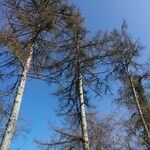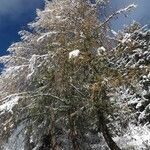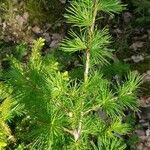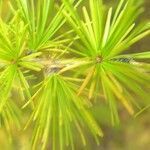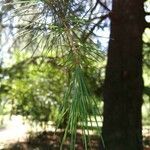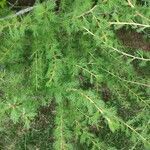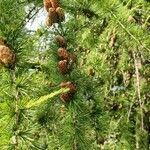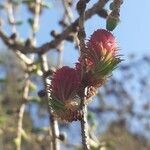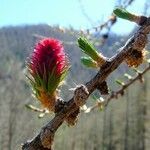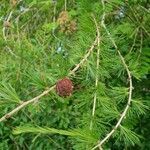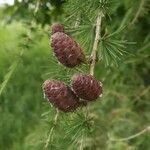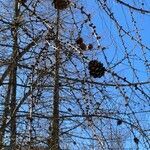Trees to 50 m tall; trunk to 2 m d.b.h.; bark grayish brown, cracking into irregular plates; crown irregularly pyramidal; long branchlets light yellow or light grayish yellow, turning gray or blackish in 2nd or 3rd year, initially glabrous; short branchlets cylindric or subglobose, bearing rings of scale remnants; leaf cushions densely yellow pubescent. Leaves 2-3 cm × 0.5-1 mm, flat or occasionally slightly keeled adaxially, keeled abaxially. Seed cones dark red or purplish, becoming green with pink scale margins, ovoid or ovoid-oblong. Seed scales ovate or suborbicular, 0.8-1.5 × 0.7-1.3 cm, initially reddish pubescent near base abaxially, glabrescent, base narrowed, margin incurved distally, apex repand or shallowly emarginate. Bracts included, apex 3-lobed, cusp exposed, ca. 2.5 mm. Seeds dark brownish gray, ovoid-cuneate, ca. 4 × 2.5 mm; wing pale brown, ovate.
A deciduous conifer tree. It grows 30 m tall and spreads 4-6 m wide. The bark is grey and scaly. The branches droop. The needles and light green and soft and are in rings. They turn yellow before falling in autumn. The female cones are 2.5-4 cm long. They are pink and erect.
